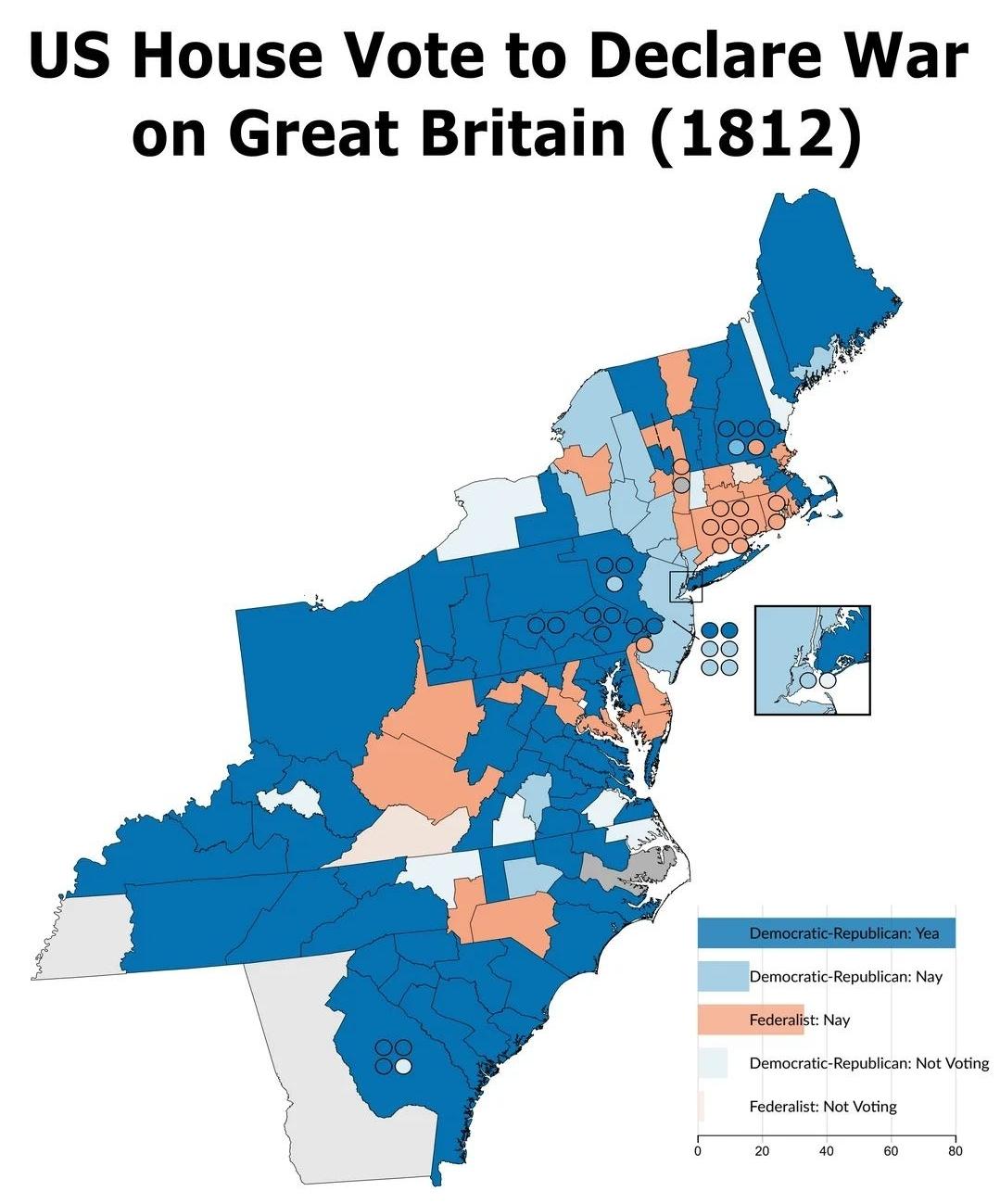Congress Voting on Declaring War Map 1812


Alex Cartwright
Senior Cartographer & GIS Specialist
Alex Cartwright is a renowned cartographer and geographic information systems specialist with over 15 years of experience in spatial analysis and data...
Geographic Analysis
What This Map Shows
This map visualizes the congressional voting patterns regarding the declaration of war against Great Britain in 1812. It highlights how representatives from various states cast their votes, indicating whether they were in favor of or against the war. The visualization serves as a critical reference point for understanding the political landscape of early 19th-century America and provides insight into regional attitudes towards foreign conflict during that era.
Deep Dive into the War of 1812
The War of 1812, often referred to as America's "second war of independence," was a pivotal moment in U.S. history. It arose from a complex mix of factors, including trade restrictions imposed by Britain, the impressment of American sailors into the British Navy, and the desire for territorial expansion. The congressional voting on declaring war is a fascinating reflection of how these issues resonated differently across various regions of the country.
In the years leading up to the war, tensions were growing due to economic disputes and Britain's support for Native American resistance against American expansion. By the time Congress met to discuss a declaration of war, the nation was deeply divided. The vote itself was close, with representatives from the South and West generally favoring war, while those from the Northeast were largely opposed.
Interestingly, the southern states, particularly those with agrarian economies and a strong reliance on trade with Britain, saw war as a means to assert national sovereignty and expand westward. In contrast, many New England states, which had robust trade relationships with Britain, dreaded the thought of conflict disrupting their economic stability. This dichotomy is vividly illustrated in the map, which delineates the vote outcomes by state.
What's fascinating is that the War of 1812 was not merely a conflict between two nations; it also revealed underlying social and economic fractures within the United States. The voting patterns show a clear alignment between political ideology and regional interests, with Democratic-Republicans predominantly supporting the war, while Federalists opposed it. This split would have lasting implications for American politics.
Regional Analysis
Examining the map closely, we can see distinct regional differences in voting behavior. For instance, states like Virginia and Kentucky largely supported the war, reflecting their agricultural economies' desire for territorial expansion into Native American lands. Virginia’s historical ties to the Revolutionary War further fueled its eagerness for conflict with Britain.
Conversely, states such as Massachusetts and Connecticut, which were home to many Federalists, opposed the war vehemently. They feared that a conflict would jeopardize their maritime economy and disrupt trade with Britain. The map reveals that in Massachusetts, the vote against war was overwhelming, pointing to a significant divergence in priorities between the coastal states and those further inland.
Interestingly, the Midwestern states, which were still in their infancy, had mixed reactions. While the desire for expansion drove some representatives to support the war, others were cautious of the implications it would have on their nascent economies. This duality emphasizes the growing pains of a young nation grappling with its identity and future.
Significance and Impact
The significance of the congressional vote to declare war against Great Britain cannot be overstated. It marked a turning point in American history, solidifying the United States' position as a sovereign nation willing to defend its rights and interests on the global stage. The war itself, although often overshadowed by the Revolutionary War, played a crucial role in fostering a sense of national identity and unity among the American people.
In the aftermath of the war, the U.S. experienced a surge of nationalism, often referred to as the "Era of Good Feelings." However, the divisions that the voting patterns revealed did not disappear; instead, they laid the groundwork for future conflicts, particularly as the nation expanded westward and grappled with issues of slavery and states' rights.
As we look toward the future, the lessons drawn from the War of 1812 and the congressional voting patterns remind us of the importance of unity in the face of external threats. Understanding these historical contexts helps us appreciate the dynamics of contemporary political discourse surrounding foreign policy and national interests.
In conclusion, this map serves not just as a historical artifact but also as a lens through which we can examine the complexities of early American politics and the regional influences that shaped them. It’s a reminder of how diverse perspectives within a nation can lead to significant changes and the importance of acknowledging these differences as we navigate our current geopolitical landscape.
Visualization Details
- Published
- October 13, 2025
- Views
- 32
Comments
Loading comments...